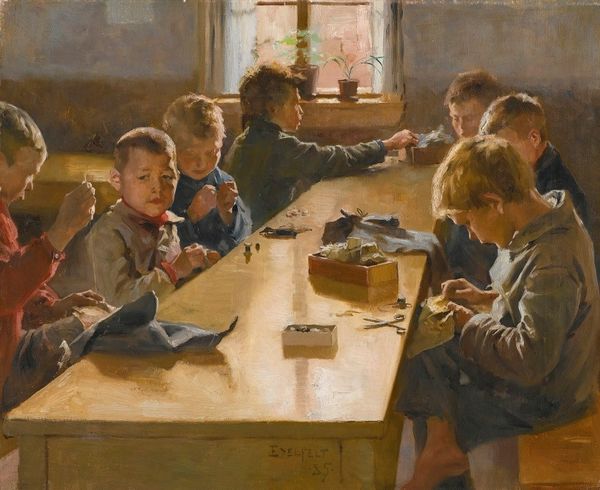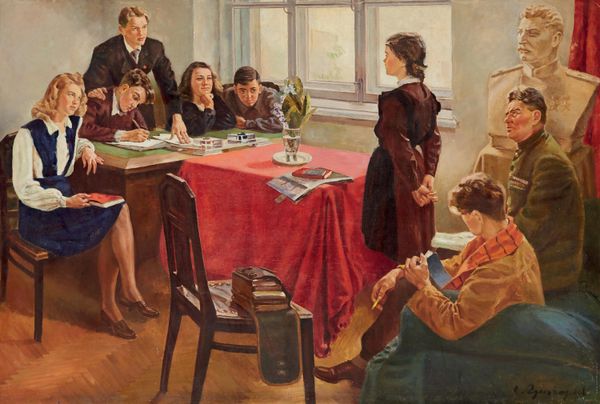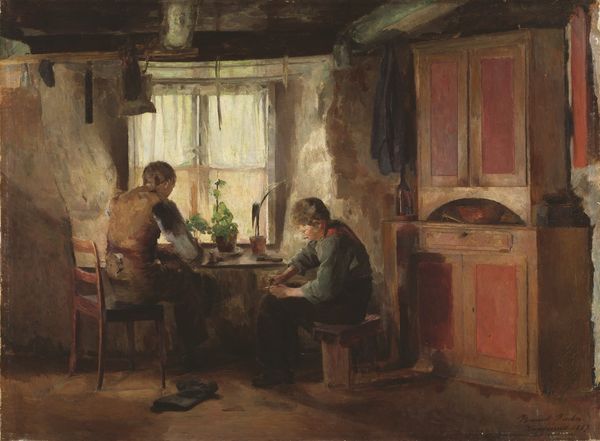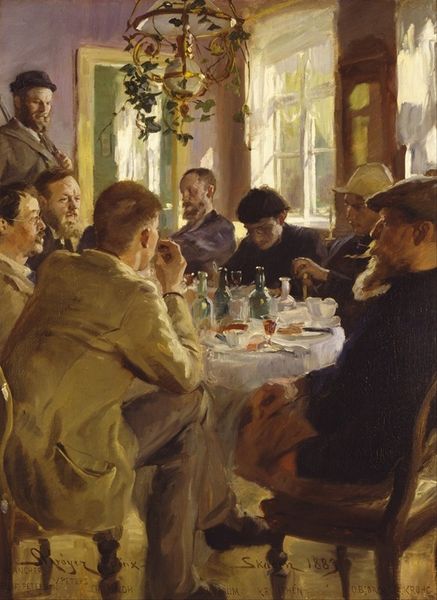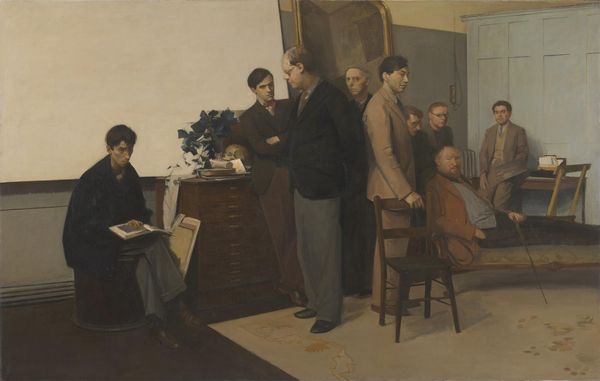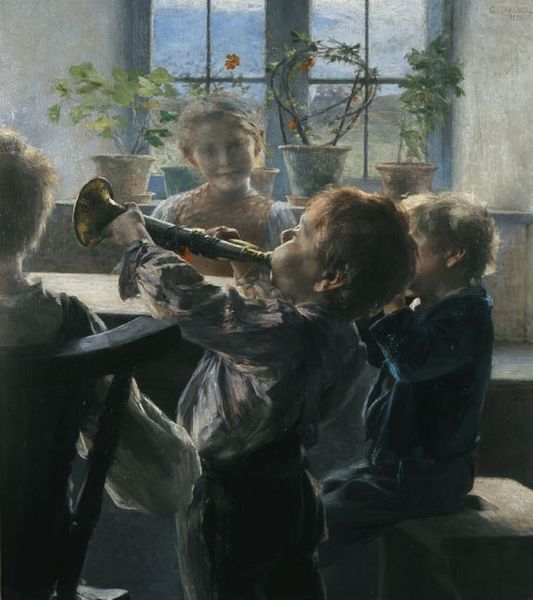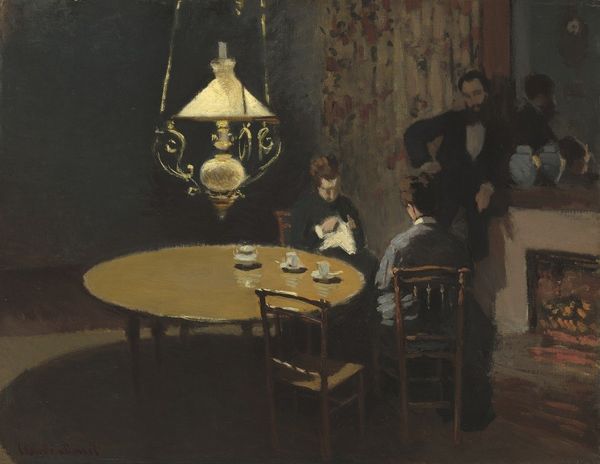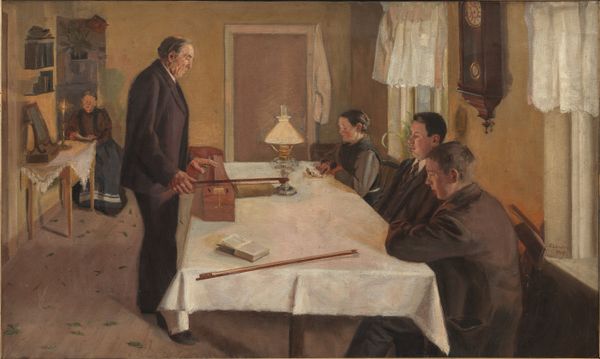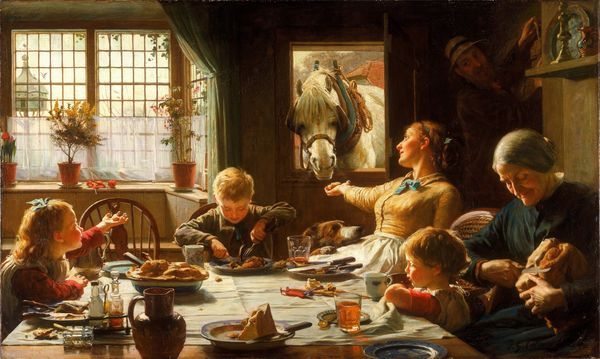
painting, oil-paint
#
portrait
#
narrative-art
#
painting
#
oil-paint
#
social-realism
#
group-portraits
#
realism
Copyright: Sergiy Grigoriev,Fair Use
Curator: Grigoriev's 1950 oil painting, "Discussion of a Bad Grade," certainly captures a specific mood. The somber expressions, the somewhat oppressive indoor setting... what strikes you most about its composition? Editor: Well, the stark contrast between the bright red tablecloth and the muted tones of the rest of the room definitely draws my eye. And the figures, especially the central ones around the table, seem to be arranged in a way that directs the viewer's gaze. What elements of the painting's structure do you find most compelling? Curator: Indeed, the colour choices create a compelling dynamic. The arrangement of figures and objects yields a network of internal relations in which meaning arises. For instance, note the table, a clear geometric shape dominating the scene. How does this redness interact with the postures of the subjects? Editor: That's an interesting point! It’s like the red is amplifying the tension. Several of the people seated at the table appear thoughtful or distressed, contrasting against the confident or neutral expression of the one person standing to the left. Also, the background elements contribute to a feeling of being observed and judged. Curator: Precisely. Notice also the stark difference in how Grigoriev treats light and shadow. Observe the fall of light against surfaces and forms and how it changes in subtle steps of grey tonality. These create a balanced system that determines a viewing point and offers a glimpse of understanding. How, in your opinion, does that balance affect our interpretation of the 'grade' being discussed? Editor: I see what you mean. Perhaps the somewhat dark palette amplifies the importance of even a "minor" setback such as an academic challenge within the larger scope of society. This dialogue about structure really unlocks new aspects to this scene for me! Curator: It's through these intricate formal relationships that the artwork's subject is activated. An insightful exploration into its structure reveals the artist’s process.
Comments
No comments
Be the first to comment and join the conversation on the ultimate creative platform.

